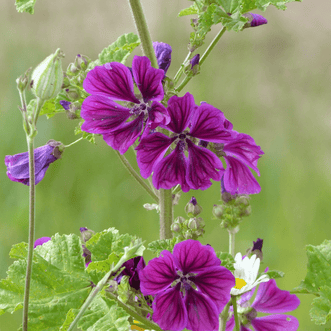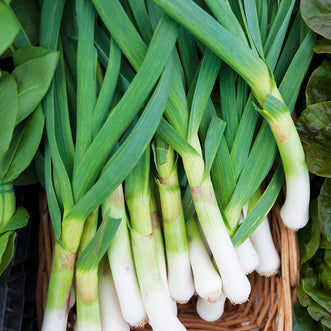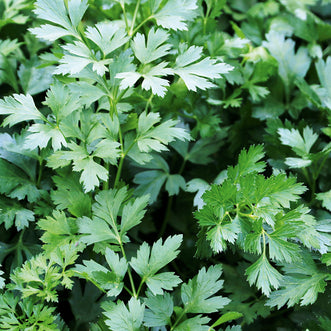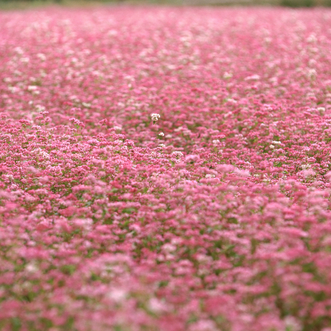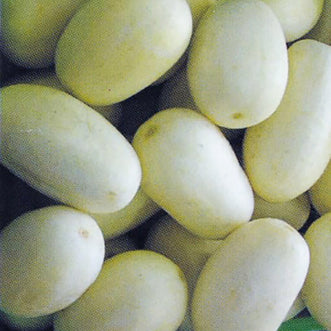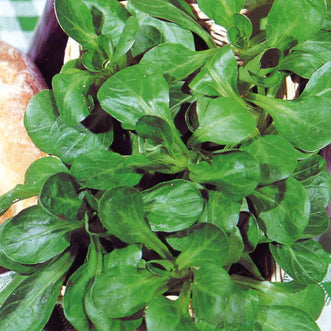Spring Planting Guide for NZ Gardeners | Kings Seeds

Are you looking to save money by growing your own food and flowers from seed? Look no further! In this guide, we'll kick off the season with expert advice on spring planting. We'll highlight the best vegetables, fruits, and flowers that thrive in New Zealand's spring and provide tips on how to increase your yield for a bountiful spring garden.
What Can I Plant in Spring?
Spring is the perfect time to start planting a variety of crops. From vibrant spring flowers to delicious spring vegetables, the options are endless. Get ready to roll up your sleeves and dig in. It's an exciting time on the garden calendar! You don't need a huge garden; a few pots at the back door will get you started, or make the most of an unused grassy area by turning it into a no-dig garden bed.
Spring Vegetables to Plant
It's time to get those seedling trays ready for some spring planting. If you are wondering, "What can I plant in spring?" almost everything is what we would answer. Spring is the time for selecting seeds and dreaming of an early summer garden with abundant harvests and delicious treats.
Here are some excellent seed varieties for spring planting to enjoy later: asparagus, artichoke, bean, beetroot, broccoli, cabbage, capsicum, carrot, celery, cauliflower, corn, cress, cucumber, eggplant, kale, lettuce, luffa, onion, pak choi, parsnip, pea, pumpkin, radish, spinach, tomato and zucchini.
Spring Fruits For Your Garden
Don't forget about the fruits! Fruits can thrive in New Zealand's spring and summer weather. The key to many fruits is starting indoors early using propagation trays and heat pads; getting a head start on fruits can mean even in colder regions where growing fruits may have felt impossible, it is attainable and enjoyable.
Fruit varies to grow from seed: pepino, goji, passionfruit, kiwano, melons, tamarillo, carob, papaya, strawberry spinach, roselle, watermelon and caigua.
Lots of these are perennial, which means planting them where they can be looked after and sheltered from the cold of winter to ensure they come back the following year; a good feed with some seaweed tonic and mulching each autumn/winter will help with growth the following spring.
Delicious Spring Herbs
If you really want to save money at the supermarket, growing your own herbs has to be at the top of the list. Some of the most expensive produce per weight is fresh herbs, and when you find out how easy and cost-effective it is to grow from seed, you will wonder why you didn't start sooner. Fresh herbs can elevate your culinary creations, and many gardeners have commented that the taste and aroma of fresh herbs over store-bought is incomparable. Many herbs love the spring season. To get started, here are several: ashwagandha, basil, bergamot, black cumin, borage, calendula, catmint, chamomile, chives, coriander, dill, fennel, ginseng, lemon balm, lemongrass, oregano, parsley, peppermint, rosemary, sage, stevia, thyme and valerian.
Colourful Spring Flowers
No garden is complete without beautiful blooms, especially to bring in pollinators and beneficial insects, which can make all the difference in the success of your edible garden. Form flowers that last many years to one season, cut flowers or even edible. We've got a list of flowers you can sow now that will brighten up your garden and bring joy to your outdoor space: amaranthus, antirrhinum, aster, campanula, cornflower, cosmos, dahlia, echinacea, forget-me-not, foxglove, hollyhock, Irish moss, larkspur, lupin, marigold, nasturtium, poppy, salvia, statice, stock, sunflower, sweet pea, viola and zinnia.
Spring Garden Tips
Tips for preparing the soil for spring planting:
1. Clear the area: Remove any debris, weeds, or rocks from the soil to create a clean planting area.
2. Loosen the soil: Use a garden fork or spade to loosen the soil. This will improve aeration and drainage.
3. Add organic matter: Incorporate compost, manure, or other organic matter such as this wool soil enhancer into the soil to improve its fertility and structure.
4. Test the soil: Consider a soil test to determine its pH and nutrient levels. This will help you know if any amendments are needed.
5. Mulch: Apply a layer of organic mulch, such as straw or wood chips, to help retain moisture and suppress weeds. Wool mulch mats can do double duty with deterring slugs and snails in your garden.
Tips on frost protection for tender seedlings:
1. Placing a cloth, such as a bedsheet or burlap, as a tent over tender seedlings can help protect them from frost.
2. Using frost cloths or floating row covers can provide insulation and prevent frost damage.
3. Watering the soil thoroughly before a predicted frost, as moist soil retains more heat than dry soil.
4. Consider investing in mini greenhouse frames so that you can move over tender seedlings when required.
5. Bring potted seedlings indoors or into a garage to protect them from frost.
Tips to help prevent pests, diseases, and disorders during the spring season:
1. Inspect your plants regularly for any signs of pests or diseases. Early detection can help prevent the spread of infestations.
2. Keep your garden clean and tidy to reduce hiding places for pests. Remove any dead plant material and debris.
3. Use natural pest control methods such as introducing beneficial insects or using organic pesticides to minimise environmental harm.
4. Monitor the moisture levels in your garden, as some pests and diseases thrive in damp conditions. Avoid overwatering and ensure good drainage.
5. Mulch your garden to help suppress weeds and maintain soil moisture, which can, in turn, help to prevent certain plant diseases.
What to Harvest in Spring
You can consider planting the following quick-growing vegetables for a spring harvest:
1. Radishes
2. Spinach
3. Lettuce
4. Mesclun
5. Silverbeet
6. Kale
8. Microgreens
9. Sprouts
These vegetables typically have short growing periods and can be ready to harvest in 10-90 days.
Enjoy Your Bountiful Spring Garden
Start your gardening journey today by visiting our website and ordering all the seeds you need to kick-start your spring garden. You can even have seed propagation trays, seed-raising mix, and fertilisers sent to your door at the same time.
Embarking on a journey from a single seed can be an incredibly rewarding and cost-effective experience that becomes more enjoyable with proper preparation and education. Thank you for entrusting us with your gardening journey; we are genuinely thrilled to assist you.
Happy Gardening!









